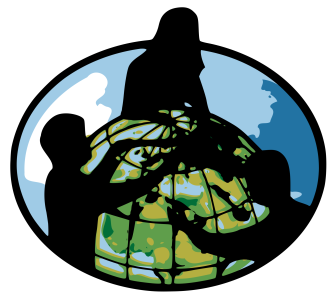
I’m sitting at my desk as I type this, my students giggling and bumbling about as they work on a project. The room has a festive vibe—the rain here has been epic, leading to students to laughingly shriek as they get soaked running across campus.
Yet, I’m sitting here at my desk trying not to cry.
As news of yet another school shooting rolled in, I was struck by so many things: by the number killed, the frequency of this news, the images of students running with their hands up or on each other’s backs, linking together in a chain of fear (always that too-familiar picture—the campus looking so like the ones so many of us call “home,” hitting me in the gut).
I look out on my students, knowing I will need to talk with them about this, yet again, but terrified because all I can think is, I don’t know what to say to you guys. I don’t know how we can protect you.
This is the hard truth of being a teacher in 2018.
When I started typing this piece, I hoped that, by the time I walked home to finish it, I would have answers. I would have some kind of clarity or some nugget of truth or wisdom I could glean from this to try and share.
The thing is, I honestly don’t know what to say anymore. All I did when I walked into my apartment right now is let myself cry. I’m devastated by the loss of life in Parkland, and in the shootings I’ve read about but I haven’t written about. Now that we’re currently averaging one school shooting every 60 hours, it is a reminder that we are in a culture of violence and danger in our schools that is becoming overwhelming.
I am starting to run out of ways to handle that. I know my job as a teacher is to help my students learn, grow, and seek joy in even the tough experiences of their lives. I know my job is to help affirm and nourish their identities and safety in my classroom. I know that school should be a place they can come to seek refuge as they navigate the ever-confusing changes that come with being a kid.
I don’t know what to say to this, though. How can I tell them that while I’d move mountains for them, I know my body is just as feeble against bullets as theirs? How do I provide comfort when we live in a world where split seconds separate life from death in the most tragic, the most unjust of ways in a place kids should feel unfailingly safe? How do I explain to them the fact that this is the new normal of the society that they are growing up in, no matter how horrifying I may think it is? How do I admit to them that, as much as I love them, I don’t know how to protect them from this?
How do I do that?
I have more questions than answers, but if I were to try and focus on something, it’s this:
My students were working on a speech project today, and I have so many more who are focusing on self-care, on mental health, on bullying, on kindness than I have in recent years of student-directed writing. The conversation about the world we live in and its effects on each other is growing.
I can ride that momentum, follow my kids, and continue pushing them to have these tough conversations in hopes that maybe it’s the thing that saves us in the long run. Conversations can eventually lead to actions that shape policy. Conversations can lead to relationships that help nourish us when we are angry or hurt. Conversations can lead to the change in culture for a generation that does not accept this as normal.
It’s not enough. It’s never enough. Just talking is the tip of the iceberg of what we must do. We must also teach and support action and legitimate means of change.
But when things feel overwhelming, when I am tempted to just turn away because I don’t know what to do or say, I know the best way I can start is to be present for my students. I will tell them I know they might feel scared or sad, and then I will tell them that they’re not alone.
Image courtesy of Pexels





